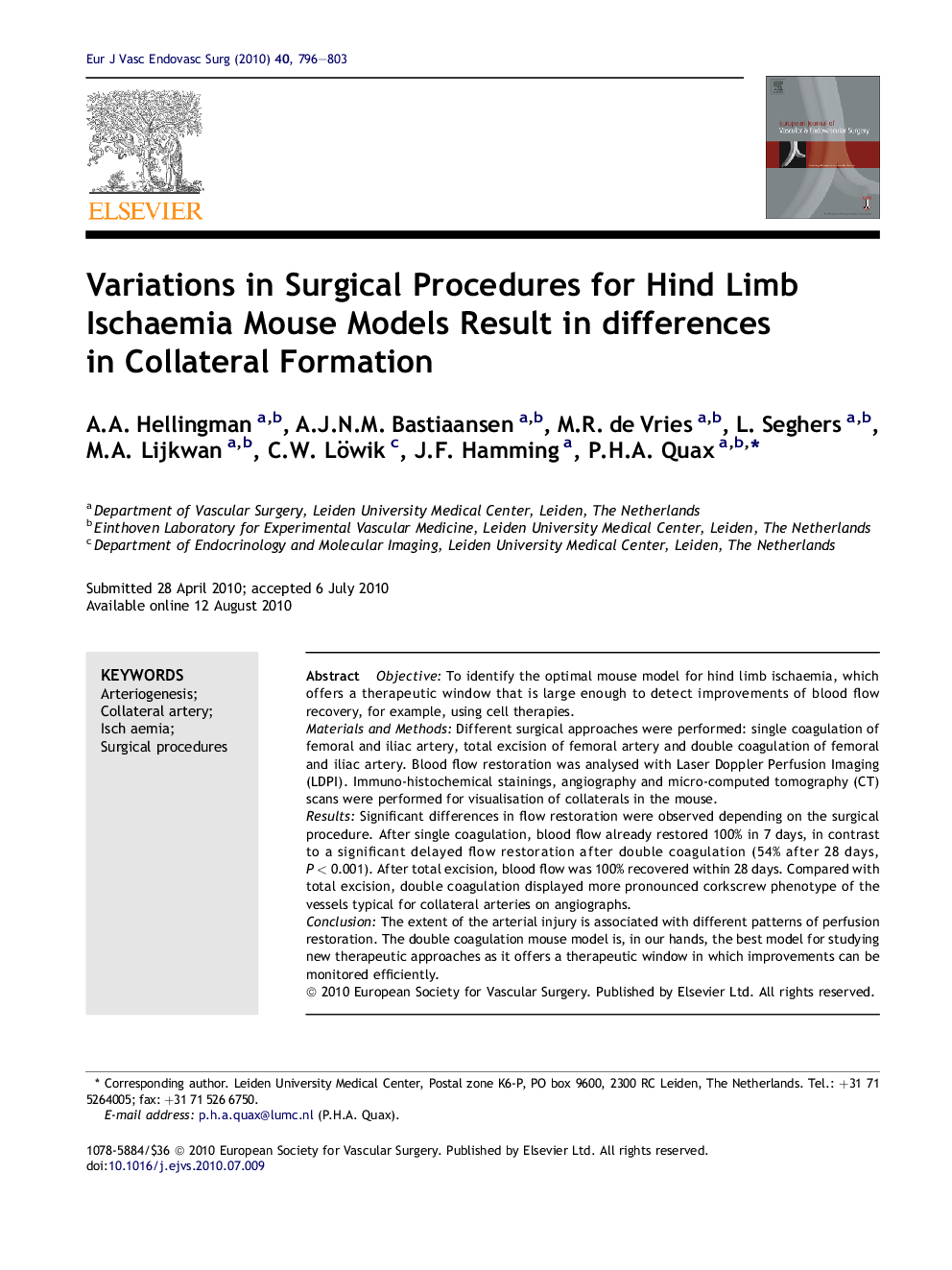| Article ID | Journal | Published Year | Pages | File Type |
|---|---|---|---|---|
| 2912839 | European Journal of Vascular and Endovascular Surgery | 2010 | 8 Pages |
ObjectiveTo identify the optimal mouse model for hind limb ischaemia, which offers a therapeutic window that is large enough to detect improvements of blood flow recovery, for example, using cell therapies.Materials and MethodsDifferent surgical approaches were performed: single coagulation of femoral and iliac artery, total excision of femoral artery and double coagulation of femoral and iliac artery. Blood flow restoration was analysed with Laser Doppler Perfusion Imaging (LDPI). Immuno-histochemical stainings, angiography and micro-computed tomography (CT) scans were performed for visualisation of collaterals in the mouse.ResultsSignificant differences in flow restoration were observed depending on the surgical procedure. After single coagulation, blood flow already restored 100% in 7 days, in contrast to a significant delayed flow restoration after double coagulation (54% after 28 days, P < 0.001). After total excision, blood flow was 100% recovered within 28 days. Compared with total excision, double coagulation displayed more pronounced corkscrew phenotype of the vessels typical for collateral arteries on angiographs.ConclusionThe extent of the arterial injury is associated with different patterns of perfusion restoration. The double coagulation mouse model is, in our hands, the best model for studying new therapeutic approaches as it offers a therapeutic window in which improvements can be monitored efficiently.
